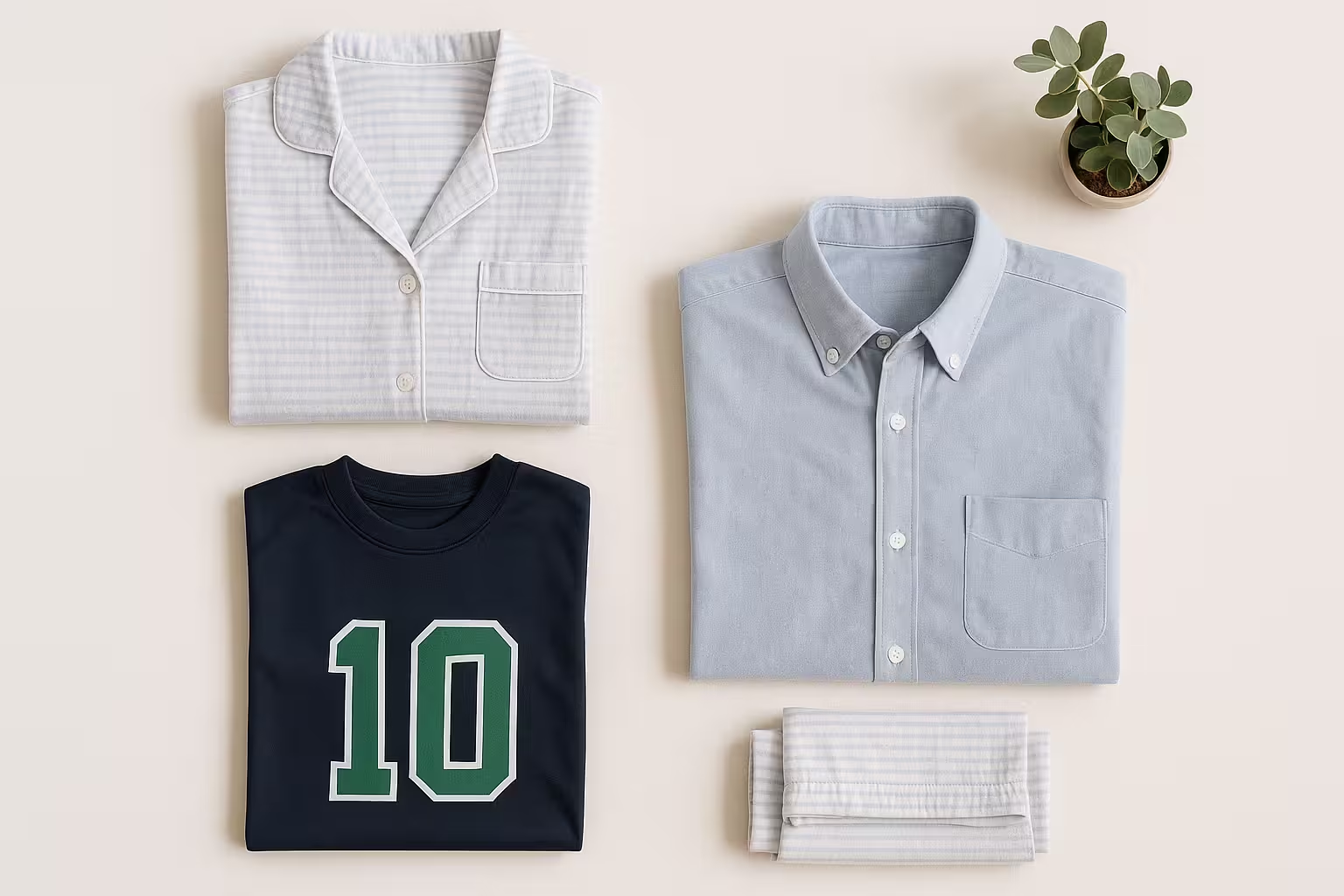A Guide to Stripping Laundry for Cleaner Clothes
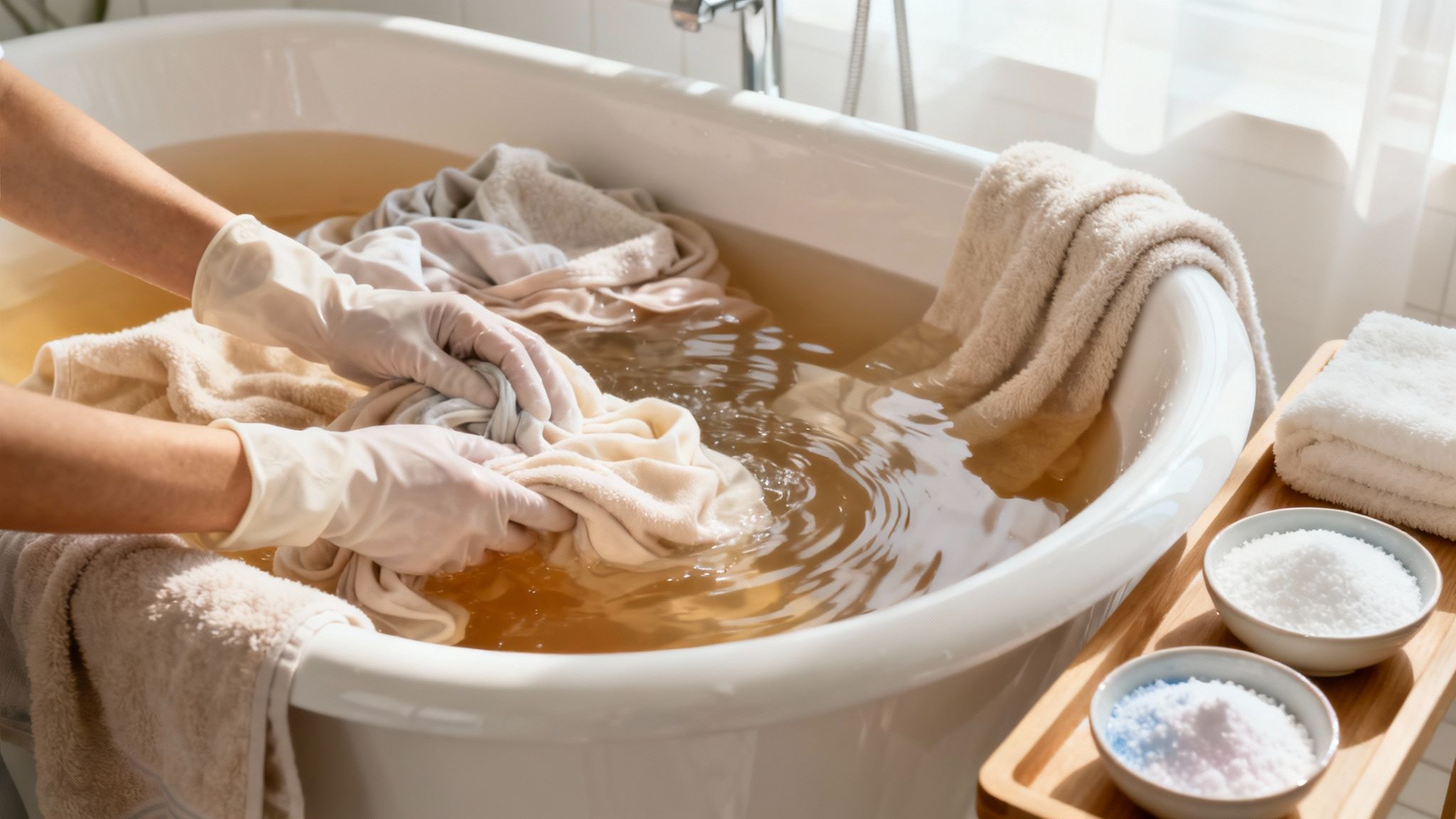
Ever had that frustrating moment when your supposedly "clean" towels feel stiff, almost water-repellent? Or maybe your gym clothes, fresh from the wash, still hold onto a faint, stubborn odor? That's where laundry stripping comes in.
It’s a deep-soaking method that goes way beyond your regular wash cycle, targeting the gunk your machine leaves behind. Think of it as a reset button for your fabrics, dissolving and pulling out all the built-up residue from detergents, fabric softeners, and even minerals from hard water.
So, What's the Deal with Laundry Stripping?
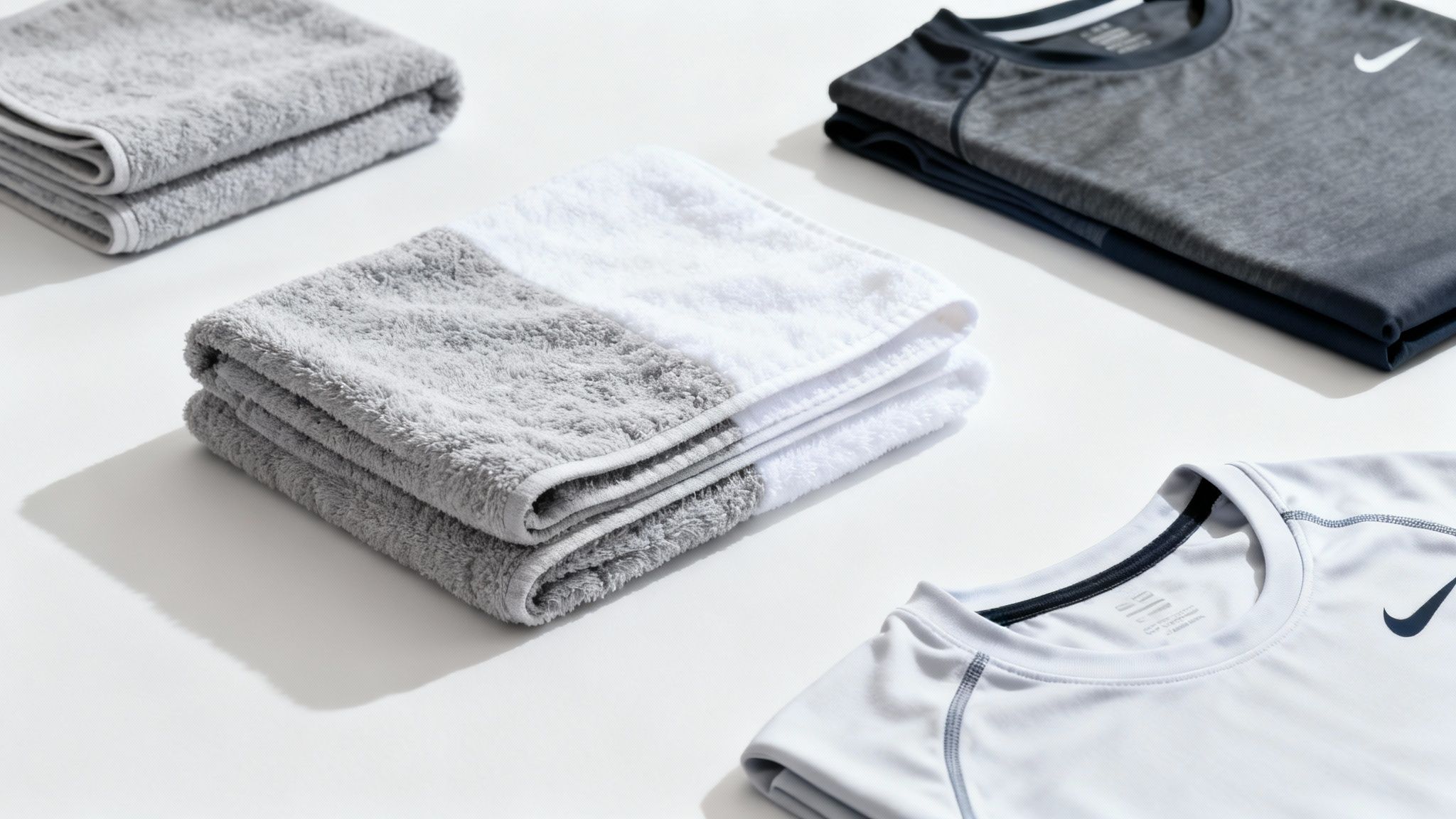
If your laundry just isn't feeling its best, you’re likely dealing with an invisible enemy: buildup. Over time, all that stuff we add to our wash—plus minerals in the water itself—creates a film on the fibers of our clothes and linens.
This invisible layer is what makes towels less absorbent, turns your crisp whites a bit dingy, and traps smelly bacteria in your favorite workout gear.
Laundry stripping tackles this problem head-on. It’s a simple but incredibly effective soak using a specific cocktail of hot water and cleaning agents designed to break down and lift away all that stubborn grime. The proof is in the water—most people are shocked (and a little grossed out) by how murky their bathtub gets, revealing just how much gunk was hiding in their "clean" laundry.
Why Is Everyone Suddenly Stripping Their Laundry?
This isn't some brand-new cleaning hack; the basic principles have been around forever. But it absolutely exploded on social media around 2020. The hashtag #laundrystripping on TikTok has pulled in over 170 million views by 2023, with countless videos showing off that satisfyingly gross, murky water.
This viral trend, combined with a growing interest in deep-cleaning everything in our homes, pushed laundry stripping into the mainstream. Google Trends data backs this up, showing search interest for related terms like "laundry detergent" hitting a peak of 95 (out of 100) during spring cleaning season. You can dig into more of the data behind the laundry stripping trend on Accio.com.
Think of laundry stripping not as a replacement for your regular washing, but as a periodic reset for your hardworking fabrics. It's like a deep-cleansing facial for your textiles, bringing them back to their original, truly clean state.
This deep clean works wonders for:
- Restoring towel absorbency: It strips away that waxy buildup from fabric softeners, making your towels thirsty and fluffy again.
- Brightening whites and linens: It lifts away the mineral deposits and old detergent that can make whites look yellowed or gray.
- Eliminating tough odors: It finally gets rid of the embedded oils and bacteria that love to cling to synthetic activewear.
What Can You Safely Strip?
Before you toss everything you own into a hot bath, it's important to know what can and can't handle the stripping process. This method is fantastic for sturdy, colorfast items but can be too harsh for delicate or brightly colored fabrics.
Here’s a quick guide to help you decide.
The key takeaway? Stick to durable, light-colored items that see a lot of use and buildup. When in doubt, it's always better to skip stripping and opt for a gentler cleaning method to avoid accidentally ruining a favorite piece of clothing.
Gathering Your Laundry Stripping Ingredients
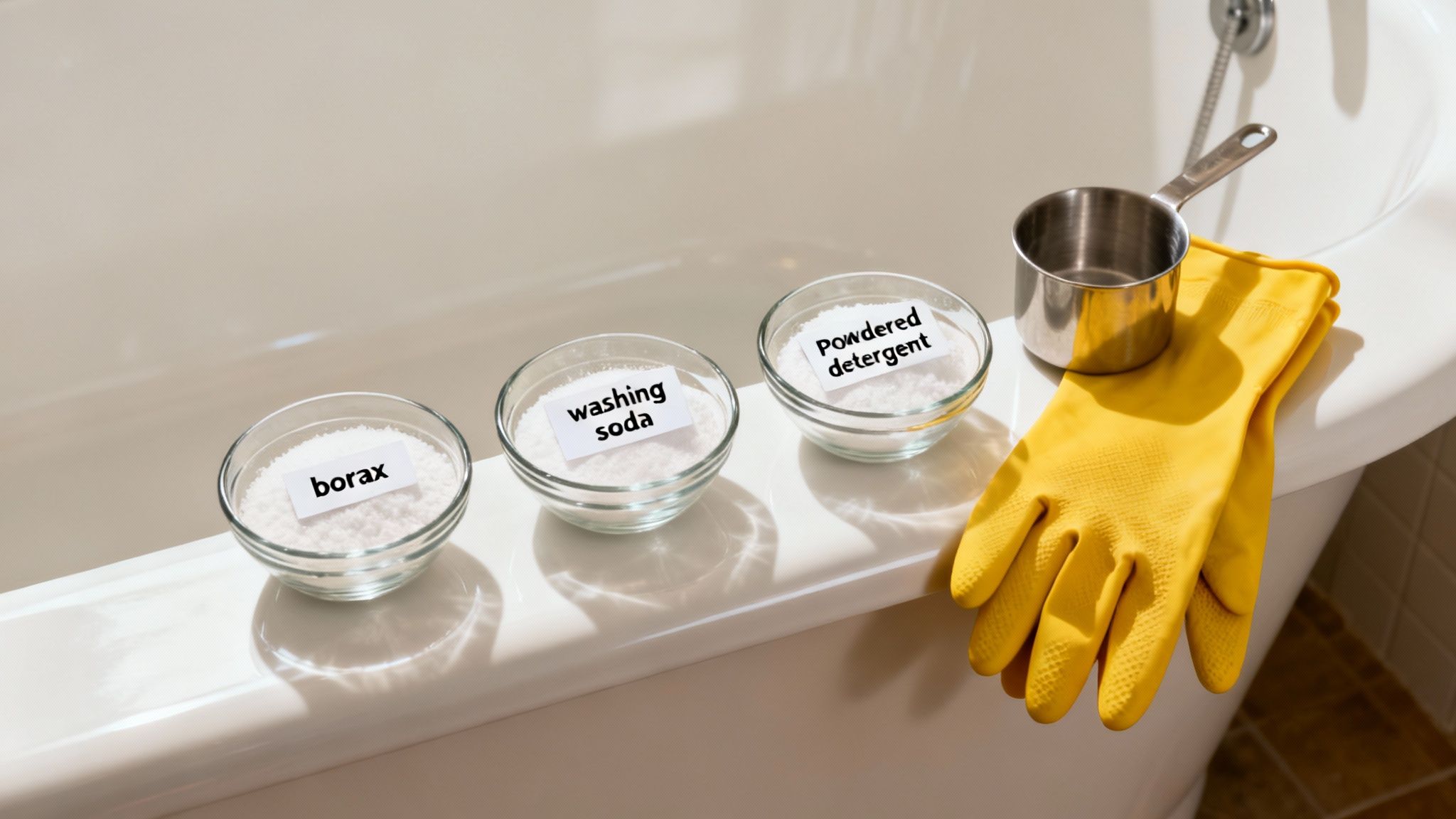
Alright, before you can get to the strangely satisfying part—watching all that gunk leach out of your laundry—you need to grab the right stuff. The classic stripping recipe is a powerhouse for a reason. Each ingredient has a specific job in breaking down all the different kinds of buildup clinging to your fabrics.
You'll need a bathtub or a big basin, of course, but the real magic comes from three key ingredients. When you combine them with very hot water, you create a potent soak that basically forces minerals, body oils, and old detergent residue to let go of the fabric fibers they've been calling home.
The Classic Recipe
For a standard-sized tub, this is the tried-and-true formula that gets the job done. These powders work as a team to soften the water and dissolve all that stubborn residue.
- ¼ cup Borax: This is a naturally occurring mineral that’s fantastic at softening hard water. It gives your detergent a major cleaning boost.
- ¼ cup Washing Soda: Also known as sodium carbonate, this is a heavy-hitter for lifting dirt, grime, and oils right out of fabrics.
- ½ cup Powdered Laundry Detergent: Go for a simple, no-frills powdered detergent. You definitely want to avoid liquid detergents or anything with built-in fabric softeners, since those are part of the buildup problem we're trying to solve.
Safety First: It’s always a good idea to pop on some gloves when you're handling these powders, especially if you have sensitive skin. Make sure the room is well-ventilated, too—you don’t want to be breathing in a cloud of dust.
When you mix these three, you get a powerful synergistic effect. The washing soda and borax go to work on the mineral deposits left by hard water. This frees up the detergent to focus all its energy on what it does best: tackling oils and dirt. If you want to dive deeper into how it all works, you can learn more about using borax for laundry stripping in our detailed guide.
The Complete Laundry Stripping Process
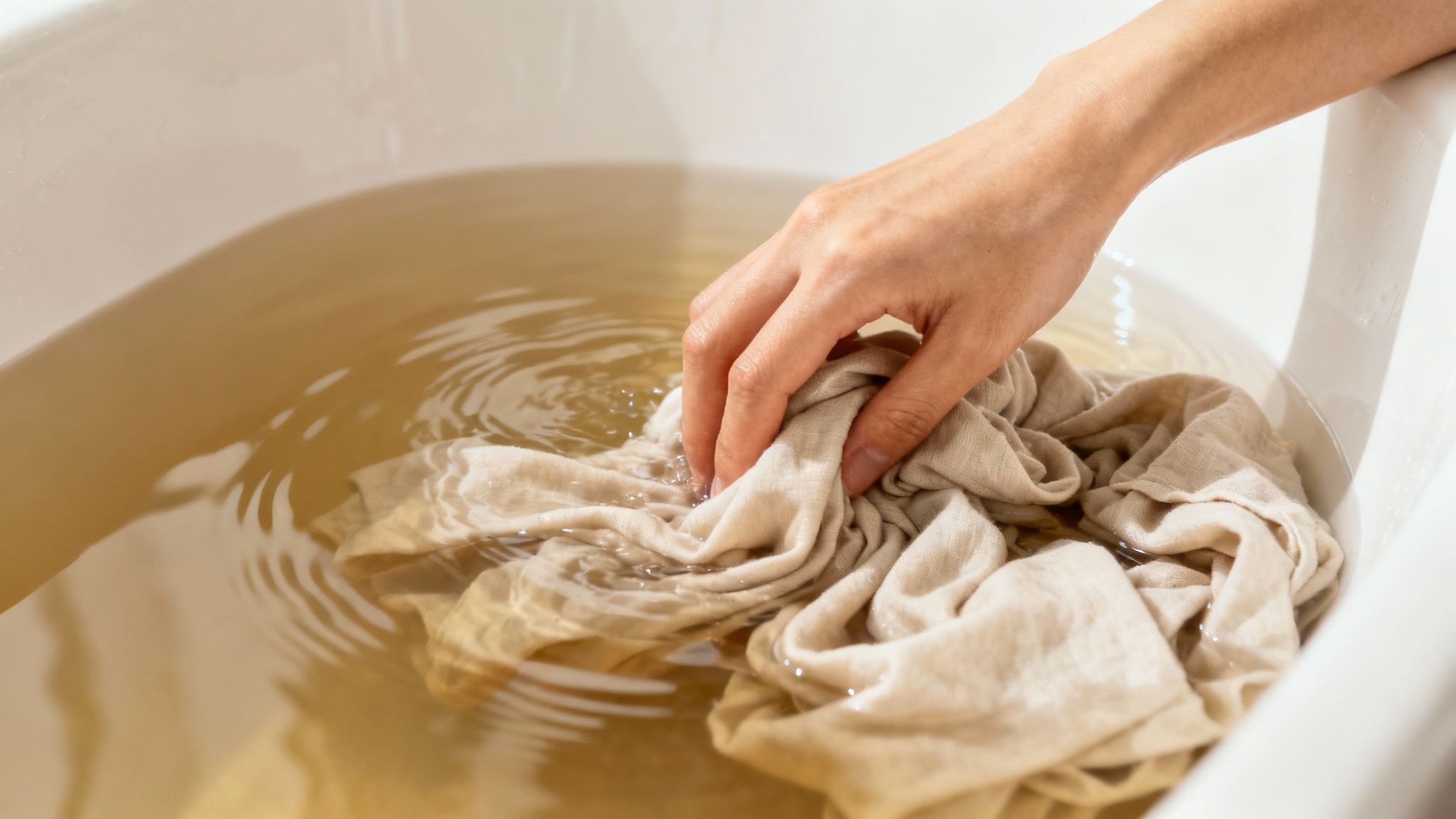
Ready to see what’s really been hiding in your fabrics? Laundry stripping is one of those oddly satisfying deep-cleaning jobs. It’s less about hard work and more about patience, but getting the steps right is key to pulling out the maximum amount of gunk.
First things first, you’ll want to start with items that are already "clean." I know, it sounds a little backward. But the goal here is to attack the deep, embedded residue, not just surface dirt. This is why freshly washed towels, sheets, or even gym clothes are the perfect candidates for this process.
You'll need a big space for the soak. A clean bathtub is usually the easiest option, but a large utility sink or even a top-loading washing machine (just don't turn it on!) will do the trick. Start filling it up with the hottest water you can get from your tap. That high heat is your best friend here—it helps open up the fabric fibers so the cleaning agents can really get in there and do their job.
Creating the Stripping Soak
As the tub fills with hot water, it's time to mix up your stripping cocktail. Go ahead and add the borax, washing soda, and powdered laundry detergent right into the water. Grab a long-handled spoon or a broom handle (a clean one, of course!) and give it a good stir until every last granule is completely dissolved.
Don't rush this part. If the powders aren't fully dissolved, you can end up with a chalky film on your laundry later on. Once the water is prepped and ready, you can start adding your clean items.
Submerge each piece one by one, making sure it gets totally saturated with the hot solution. Try not to overcrowd the tub. Your laundry needs some room to float around so the water can penetrate every single fiber.
Now, it’s time to wait. You’ll want to let everything soak for at least four to six hours. This long soak is what gives the solution enough time to break down and release all that built-up grime.
A great tip is to give the laundry a good stir every hour or so. This moves things around, helping to redistribute the cleaning agents and exposing different parts of the fabric to the solution for a more even, thorough strip.
The Final Rinse and Dry
After a few hours, you'll be greeted by some seriously murky, gross-looking water. Don't be alarmed—be satisfied! That gray or brown water is visible proof that the process is working. It’s a lovely soup of dissolved detergent buildup, old fabric softener, body oils, and minerals that have finally been lifted from your fabrics.
Now, carefully drain all that dirty water. Your items will be super heavy, so gently wring out as much of the excess water as you can.
Transfer the damp, stripped laundry straight into your washing machine. Run a water-only cycle—a normal or rinse-and-spin setting works perfectly. Whatever you do, do not add any more detergent or fabric softener. The goal is simply to rinse away any leftover stripping solution.
Finally, dry your freshly stripped laundry just as you normally would. I like to toss in a few wool dryer balls to help fluff up towels and sheets. You'll be amazed at how much softer and more absorbent they feel. You've basically hit the reset button on your fabrics
Common Laundry Stripping Mistakes To Avoid
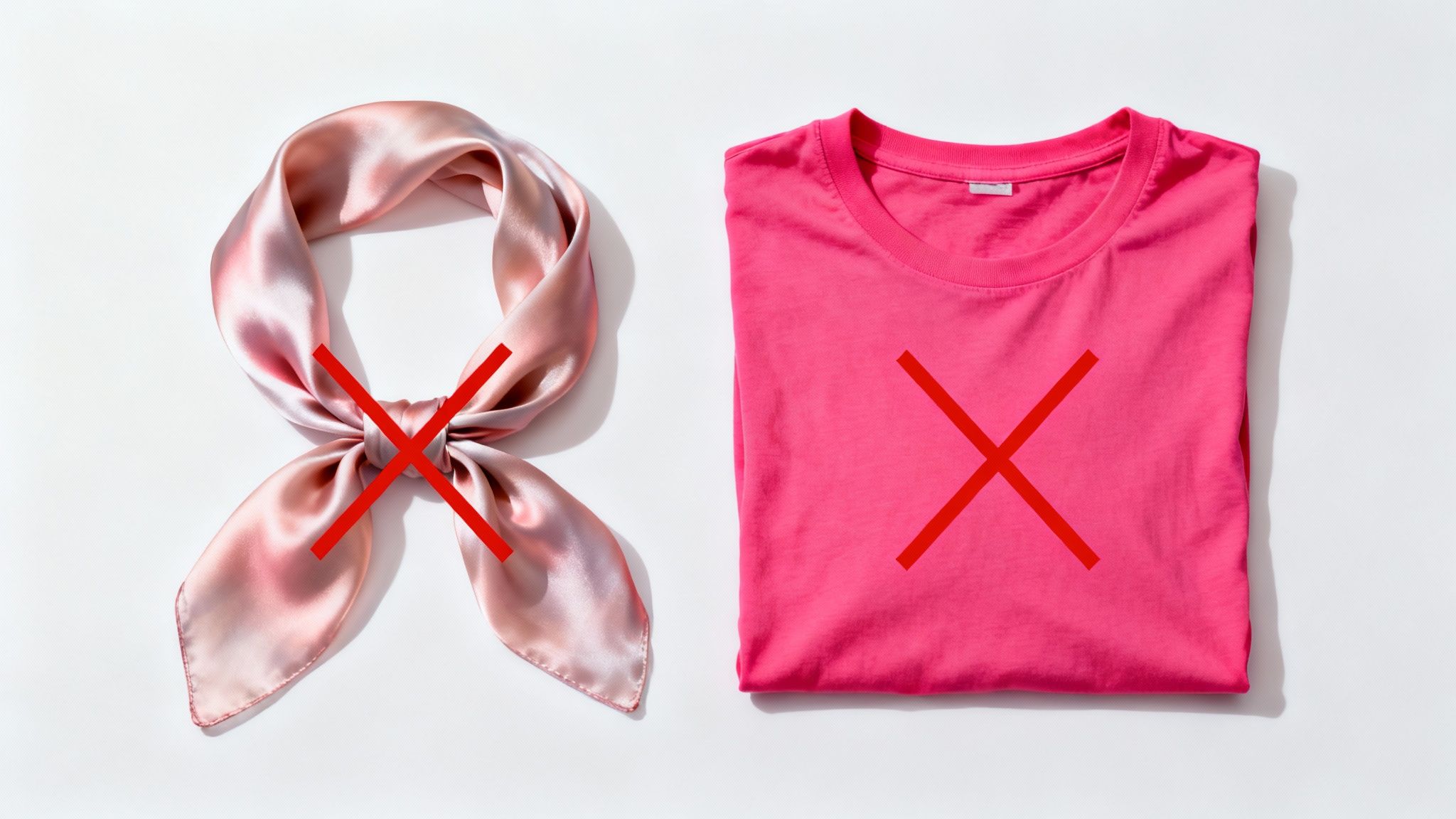
While laundry stripping can feel like a magic trick, a few common missteps can quickly turn that deep-clean dream into a fabric nightmare. Honestly, knowing what not to do is just as important as following the right steps.
The absolute biggest mistake I see is stripping the wrong items. This intense soak is way too harsh for anything delicate. Keep your wool, silk, lace, or intricately embroidered pieces far away from the tub. The combination of hot water and potent cleaners can cause damage you just can't undo.
Protecting Your Fabrics And Colors
Another major pitfall? Color bleeding. Tossing in vibrant or dark-colored clothes is a real gamble. The hot water is notorious for making dyes run, which can leave you with faded clothes or, even worse, a splotchy, tie-dyed mess that ruins the whole batch. When in doubt, just stick to whites and light-colored items.
Also, a crucial pro-tip: you absolutely must use powdered detergent only. Liquid detergents often have softeners and other additives that actually cause the buildup you're trying to remove. Using them here completely defeats the purpose.
Laundry stripping is a targeted treatment, not a weekly routine. Think of it as a reset button you press only once or twice a year for hardworking items like towels and sheets. Overdoing it can weaken fabric fibers over time.
Finally, fight the temptation to overcrowd the tub. Your towels and sheets need room to swim around so the stripping solution can work its way into every last fiber. A tightly packed tub just leads to a spotty, disappointing clean.
This kind of deep cleaning is part of a massive global market. In 2025, the laundry care industry hit $110 billion in worldwide revenue, and it's projected to grow by 3.09% annually. This just shows how much people are looking for specialized solutions beyond a basic wash. You can discover more insights about the laundry care market on Statista.
How Often Should You Really Strip Your Laundry?
Laundry stripping isn’t something you need to add to your weekly to-do list. Think of it more like a deep-cleaning reset you do every once in a while, not a regular chore. For most of us, this is a semi-annual or maybe even an annual ritual. It’s really meant for those hardworking items that see a ton of use and buildup—think bath towels, bed sheets, and pillowcases.
You don’t have to set a calendar reminder, either. Your laundry will give you some pretty clear hints when it’s time.
The biggest giveaway? When your towels start feeling less like soft, fluffy clouds and more like stiff, water-repelling boards, even when they’re fresh from the dryer. Another dead-on sign is a stubborn, musty funk in synthetic fabrics (I’m looking at you, gym clothes) that a normal wash just can’t seem to touch.
A Few Things That Affect How Often You’ll Need to Strip
How often you need to strip your laundry really comes down to your specific situation. Your local water quality, for instance, plays a huge role. If you live somewhere with very hard water, you’re going to see mineral buildup happen much faster. In that case, you might find yourself needing to strip your linens every six months or so.
On the other hand, your own laundry habits make a big difference. If you’re already a pro at using just the right amount of detergent and you steer clear of fabric softeners, you might only need to strip things once a year—or maybe even less frequently.
The real goal here is to use stripping as a targeted solution only when it’s actually needed, not as part of your routine. Overdoing it can stress out fabric fibers over time, so it’s much better to just pay attention to how your laundry is looking and feeling.
Of course, maintaining good habits between these deep cleans is key. Simply practicing simple habits to prevent stains and keep clothes fresh can seriously extend the time between stripping sessions and keep your fabrics in much better shape for longer.
Answering Your Laundry Stripping Questions
Alright, so you’ve got the steps down, but maybe you're still hesitant to turn your bathtub into a science experiment. I get it. It’s smart to ask a few questions before you dive in, because getting the details right is what separates a successful strip from a laundry mishap.
Can You Strip Colored Clothes?
This is probably the number one question I hear. It’s a totally valid concern—you’re using a pretty potent mix in very hot water, which is a perfect recipe for dye bleeding. Dark jeans, bright t-shirts, vibrant towels? They are all at risk.
While some modern, colorfast fabrics might come out okay, my honest advice is to stick to whites and light-colored items. If you're dead set on trying it with a colored item, please test just one piece you wouldn't be heartbroken to lose first.
Is This Safe for My Washing Machine?
This one’s a hard no. The long, hot soak should always happen in a bathtub, sink, or a large basin. Your washing machine's drum and seals just aren't built to hold that kind of concentrated, hot cleaning solution for hours.
However, once the soaking is done, the final rinse cycle in your machine is not only safe but totally necessary to wash away all that released gunk and any leftover stripping solution.
What About Hard Water?
Here’s an interesting twist: hard water isn't a problem for laundry stripping. In fact, it's often the reason stripping is so effective in the first place. Those minerals in hard water are a major cause of the buildup you’re trying to eliminate.
If your home has hard water, you’ll probably see some seriously murky results (which is disgustingly satisfying). You don't need to change the recipe, but you might find your towels and sheets need this deep clean a little more often than others.
This is just one of many laundry myths floating around. We actually get into a bunch of others in our popular article debunking common laundry myths and sharing fabric care truths.
The main thing to remember is that stripping is a targeted treatment for specific problems like mineral and detergent buildup. It’s not an everyday solution for everything in your closet.
It's also worth noting that people are becoming more mindful of what goes into their laundry. A recent survey showed that 61% of consumers are now looking for biodegradable detergents. This move toward gentler ingredients is a great sign for both our clothes and the environment. You can discover more insights about laundry service trends on futuremarketinsights.com.
Overwhelmed by laundry buildup? Let Columbia Pike Laundry handle the deep cleaning for you. Our professional Wash & Fold service gives your clothes a true reset, buying back your time and peace of mind. Schedule your first pickup today!
Popular Blog Articles

Meet the Author
Daniel Logan didn’t start CPL because he loved laundry. He started it because his family was drowning in time debt, and laundry was one of the biggest weights.
Mornings were chaos with two kids under 5. Evenings felt like catch-up. And weekends? Gone to sorting socks and folding piles.
He knew his story wasn’t unique. So he built a business that gave families like his just a little bit of breathing room one load at a time.
With no laundry experience but deep tech skills, Daniel rolled up his sleeves, doing every job himself while building systems that turned it into a modern laundry service that saves customers time, simplifies their lives, and delivers reliability they can count on.
That’s where CPL began. Not from a playbook, but from pain. From one dad trying to buy back time: for himself, and for every household like his.





